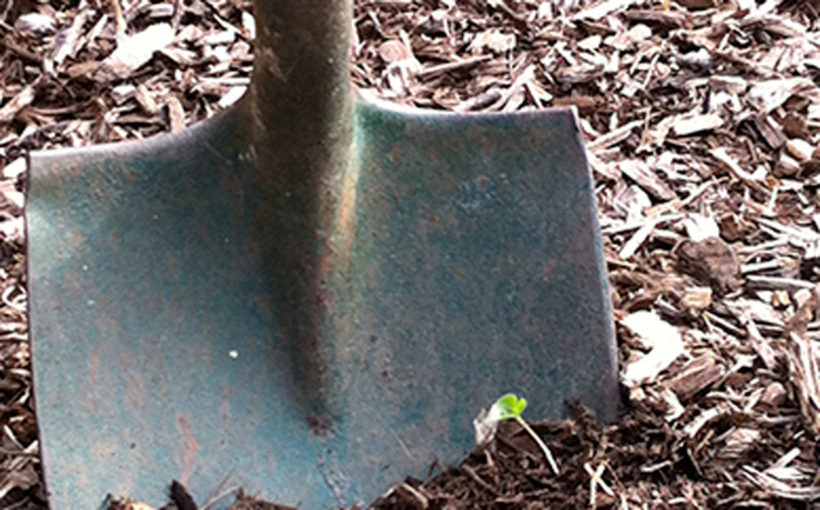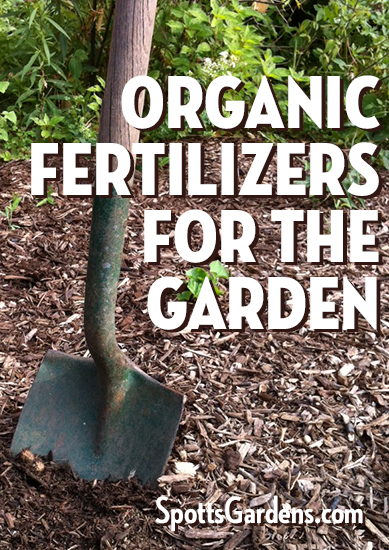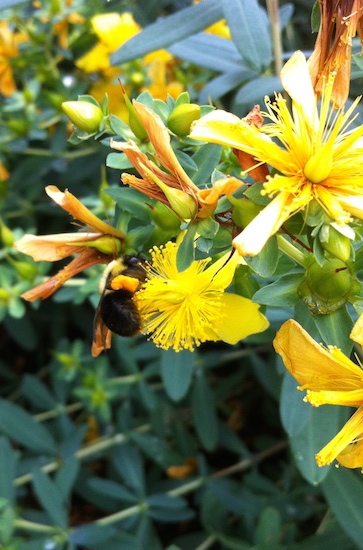We rarely use fertilizers for our ornamental plants. Instead, we carefully match plants to the growing conditions, which means our plants aren’t relying on fertilizers. They can get all the nutrients they need from the soil. If plants look a little puny, a judicious application of compost usually perks them right up.
But if your soil is missing a nutrient or your plants need some extra help, an organic fertilizer can be the solution. We use fertilizers and organic amendments to:
- replace nutrients being washed out of container gardens
- correct imbalances in soil chemistry
- boost flower production where consistent showiness is important
Organic fertilizers are those that contain carbon, plus one or more nutrients other than hydrogen and oxygen required for plant growth. More broadly, organic fertilizers are derived from living things and their by-products, not from petroleum.
Playing the Numbers: NPK Ratios
The three nutrients plants need in the greatest quantities are nitrogen, phosphorus, and potassium. They’re often represented by their elemental symbols:
N (nitrogen) – P (phosphorus) – K (potassium) = NPK
On every bag of fertilizer, you’ll find three numbers separated by dashes. The three-number figure is called the NPK ratio. The numbers represent the nitrogen, phosphorus, potassium (in that order) present by weight or volume.
For example, a bag that says 5-4-3 has
- 5% nitrogen by volume
- 4% phosphorus by volume
- 3% potassium by volume
Up, Down, All Around: NPK Ratios and Plant Health
Each of these elements serves a different function for your plants. The easiest way to remember is “up, down, all around.”
- N, nitrogen, is “up.” Nitrogen encourages green, leafy top growth.
- P, phosphorus, is “down.” Phosphorus encourages healthy root systems, fruiting, and flowering.
- K, potassium, is “all around.” Potassium is valuable for the overall health of the plant, including fruit formation and hardiness.
Use a fertilizer whose highest number correlates to what you want the plant to do.
Bloodmeal, for example, has an NPK ratio of 12-0-0. It will deliver a substantial jolt of nitrogen, encouraging your plant to put on a lot of green, vegetative growth, probably at the expense of flowers and fruit.
Bonemeal, on the other hand, has an NPK ration of 4-12-0. While it does have some nitrogen, it delivers much more phosphorus, which is particularly good for roots, fruits, and flowers. A rose given bonemeal will focus on blooming its head off instead of putting out leafy growth.
When a fertilizer offers the same percentage of all three elements, it’s called a balanced fertilizer. The NPK ratio for compost is about 1-1-1, making compost a gentle all-around boost to plant health.
More Isn’t Better
You may have noticed that these NPK ratios are pretty low, which means they have a relatively small amount of active ingredient by weight or volume. That’s a good thing! Plants can only use so much of any given element. The rest remains in the soil or (worse) washes off.
Synthetic fertilizers (those derived from petroleum) generally have much higher NPK ratios, and in some cases deliver much more than the plant can take up. Phosphorus runoff from fertilizers is a major component of water pollution.
As a rule of thumb, solid fertilizers release nutrients more slowly than liquid ones do. To amend soil in ornamental and kitchen gardens, we rely on compost, then add other solid fertilizers if appropriate.
Liquid fertilizers, like compost tea or fish emulsion, deliver nutrients quickly. We use them primarily for container gardens, which lose nutrients every time we water. Our go-to is homemade compost tea, but we’ve also had good results with liquid fertilizers based on worm castings. Liquid fertilizers are often used with houseplants and seedlings too.
Common Organic Fertilizers
We’ve listed some common organic fertilizers here, along with their estimated NPK ratios. Always check the bag for the specific nutrients by volume, and use according to directions.
Bloodmeal (12-0-0). Derived from blood, bloodmeal is a quick-acting source of nitrogen that encourages leafy growth. You can also add it to your compost heap to help speed decomposition.
Bonemeal (4-12-0) Made from ground bones, bonemeal is a slow-release source of phosphorus and calcium. Throw some into the planting hole when planting bulbs.
Bat guano (10-3-1) Guano from different producers may have different NPKs; some are higher in nitrogen, some in phosphorus. Either way, bat poop delivers a shot of easily accessible nitrogen. Mix it into potting soil, or make it into a tea for a fast-acting fertilizer.
Cottonseed meal (6-2-1) A good fertilizer for acid-loving plants like blueberries, cottonseed meal also acts as a soil acidifier. Be sure to get one that is certified pesticide free.
Egg shells (1.2-0.4-.01) Egg shells deliver calcium and trace minerals. Save yours from the kitchen, dry them out in the oven, then grind them into a powder. Ideal around roses, they’re also a good slug deterrent when place in a ring around the plant.
Fish emulsion (4-4-1) This liquid fertilizer is derived from fish and sometimes smells like it. It can be applied to soil as a fertilizer or used as a foliar feed.
Kelp meal (1-0-2) A source of trace minerals, iron, and potassium, kelp meal also contains plant growth hormones, so use it sparingly.
Worm castings (0.5-0.5-0.3) Worm castings are essentially worm poop. They’re a great soil conditioner and add organic matter and trace minerals to soil. Organic liquid fertilizers often incorporate worm castings.
Sources for Organic Fertilizer
Espoma carries an excellent line of organic supplements and plant foods. Espoma’s Organic line includes single ingredient amendments and organic fertilizers formulated for specific plants (Rose-Tone, Holly-Tone, etc.)
FoxFarm’s Happy Frog line is organic. We’re also fans of their Big Bloom Liquid Plant Food, an ideal organic fertilizer for container plants.
Ask at your local independent garden center for additional lines that they may carry.
We’re happy to help you figure out the right amendments for your soil. Contact us to schedule a garden visit today!


